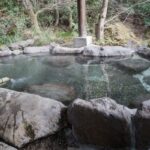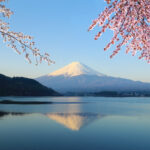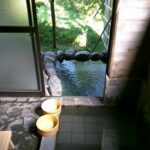Going to visit an onsen and want to know about the recommended soaking times? Read this article to find out what you need to know about how long you should stay in an onsen.
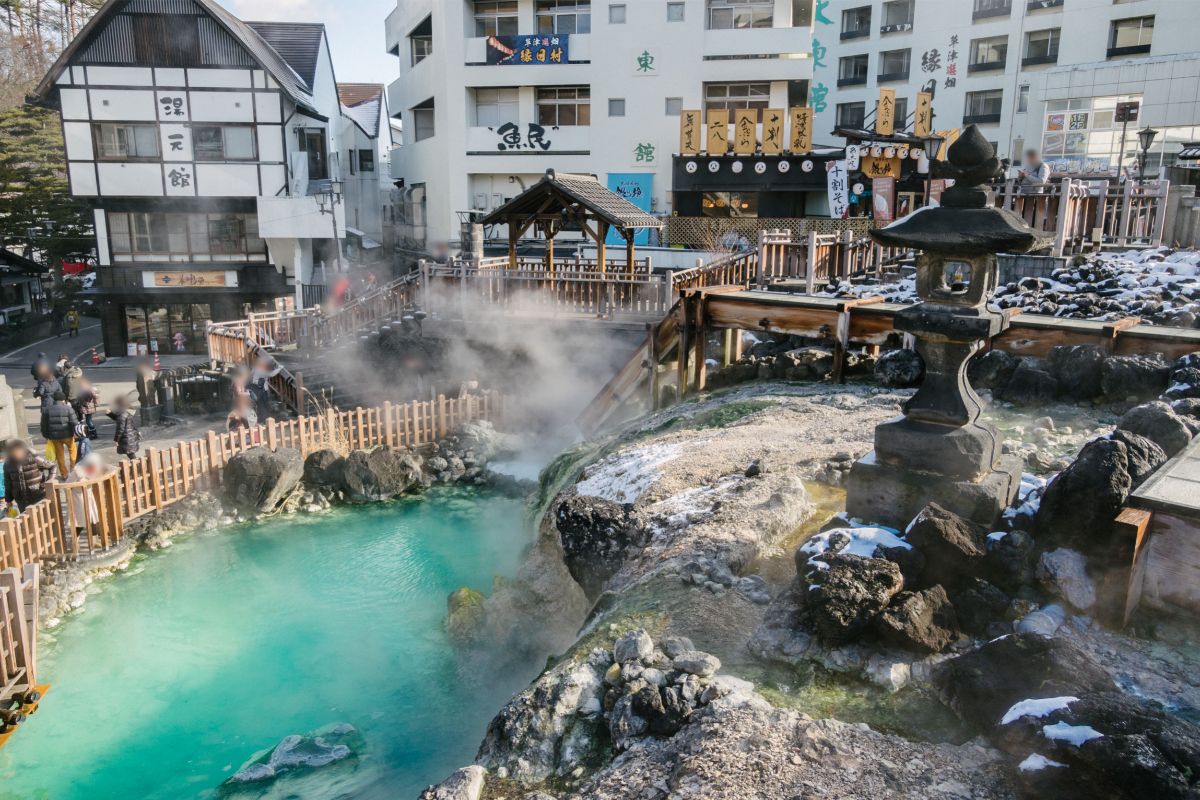
We’ve also covered the rules that you should be aware of, as well as the benefits of onsens to help prepare you for the experience.
About Onsens
Benefits Of An Onsen
There are many benefits to soaking in an onsen on occasion. This is a common practice for Japanese people, and can actually help to maintain and improve health!
There are four primary benefits of enjoying some time in an onsen:
- It relieves pain – evidence has shown that soaking in an onsen can help to relieve chronic pain. The heat from the baths can dull our perception of pain, and the buoyancy experienced while in the water can help relieve aching joints.
- Increased blood circulation – the calcium and sodium bicarbonate found in onsen water helps to increase blood flow around our bodies when it gets soaked through the skin.
- Helps to treat skin problems – the silica sound in onsens can have a beautifying effect on the skin, which can also help with issues like psoriasis and eczema.
- Helps you sleep better by reducing stress – the heat of the baths help tense muscles to relax, and can help clear your mind. This will reduce the overall feeling of stress, and help you to sleep better!
Rules To Be Aware Of
It’s worth mentioning that there are rules and regulations to be aware of when visiting an onsen in Japan. While every establishment will be different, you should know what is expected of you when you visit one of these locations.
We will briefly outline all the important rules that you must follow when in an onsen establishment:
- ALWAYS wash your whole body before entering the bath – there will be designated areas for visitors to bathe themselves. Use the products provided and do not use or bring your own, as it could impact the water of the bath
- NO photography, even of yourself – respect everyone’s privacy. No one wants cameras going off when you’re in a room full of naked people.
- Wring the water from your towel into the drain, NOT in the onsen bath – never wring or drain your modesty towel back into the onsen (read here for more about towels and onsen)!
- No jumping or swimming in the onsen – keep your movement minimal so that you don’t disturb the other guests at the onsen. Draw as little attention to yourself as possible.
- You have to be COMPLETELY naked – not even jewelry is allowed. You need to be prepared for this, or else you shouldn’t go!
- Have a modesty towel – find out from tour onsen if you need to bring one, or if they will supply you with one. This is useful if you don’t want to bare all while moving from one spot to another.
- No eating or drinking allowed – no food or drinks are allowed in the onsen for obvious reasons. Mistakes happen, so it’s safer to just avoid it all.
- Modesty towels must NOT touch the water – never allow your modesty towel to touch the water. Keep it on a rock outside the onsen, or balance it on your head if you can.
- Keep your voice down – people go to onsens to relax, and there’s nothing relaxing about listening to people talk at full volume. This is an especially important point to take home if you are a visitor in Japan.
- No staring at other people – staring is rude. You might not be used to being in a room full of naked people, but hopefully you will find the experience liberating! Just be polite and keep your eyes to yourself.
- No soap or shampoos allowed – no chemicals or products are allowed in the onsen baths. This will impact the baths and ruin the experience
- Remove shoes at the door and place them in a locker – put your shoes in the locker given as soon as you enter the building
- No peeing in the onsen bath (obviously) – this does without saying.
- Your hair and face MUST NOT touch the water – secure hair properly and use pins to get anything that could fall out. Don’t submerge your face in the water, either.
- No diapers are allowed on children – this follows the above rules of no clothing allowed in the baths to keep the water pure.
- No children who are not toilet trained are allowed – this is for obvious reasons, as accidents can easily happen.
How Long Should You Stay In An Onsen?
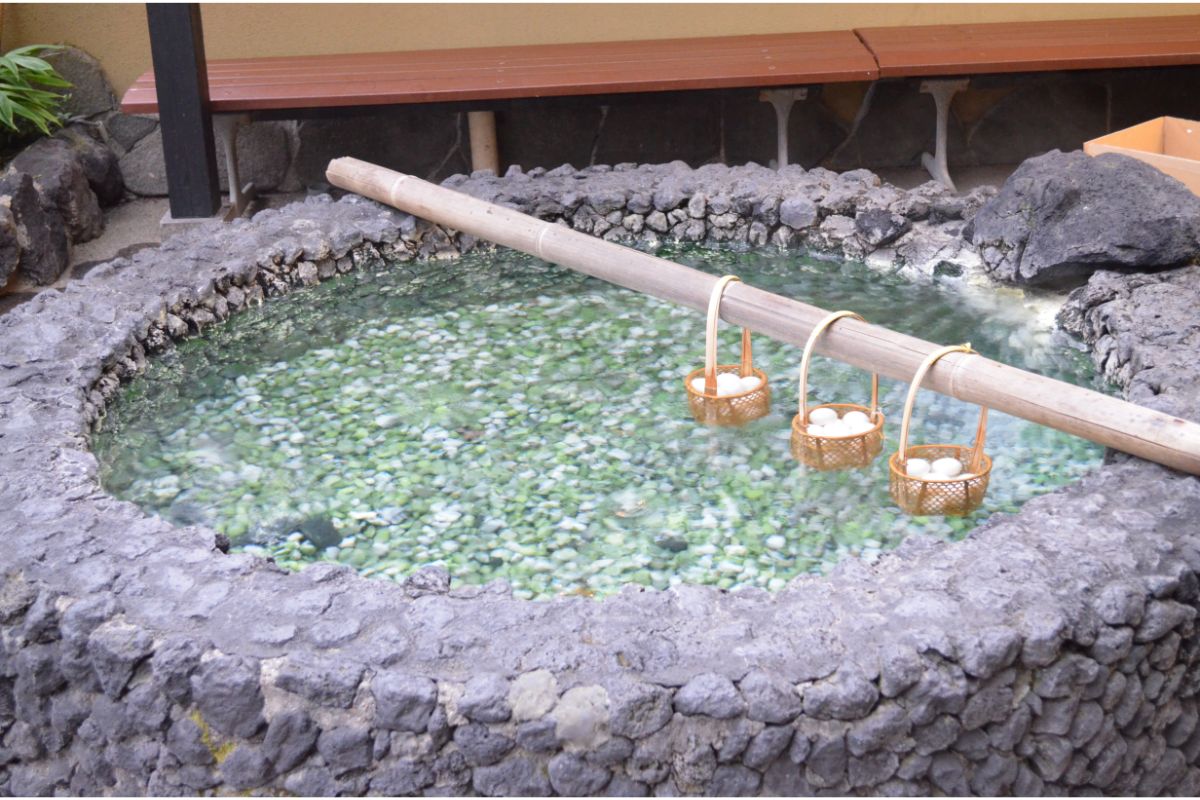
How long you should stay in an onsen depends on how hot the water is! There are maximum and minimum recommended soaking times that we have outlined in the sections below.
Maximum Recommended Soaking Times
Below are the recommended soaking times at an onsen depending on the temperature of the water:
- 42 °C water – 5 minutes
- 41 °C water – 10 minutes
- 40 °C water – 15 minutes
- 39 °C water – 20 minutes
- 38 °C water – 25 minutes
- 37 °C water – 30 minutes
- 36 °C water – 40 minutes
The general rule is as follows: the hotter the water, the shorter the soak!
This is no joke, as there can be serious side effects if you sit in the hot water for too long. Because of this, do your best to time how long you are in the onsens for. If you can, you should try to keep an eye on the others in the onsen to make sure they are okay!
Minimum Recommended Soaking Times
There is no recommended minimum soaking time! However, there’s a good rule of thumb to follow – soak until you sweat.
As long as your heart rate doesn’t get too high, and you experience no other side effects (which we will cover below), you can relax.
We would recommend a minimum soaking time of around five minutes, but this is likely to be different for everyone. Just do what you feel comfortable doing, and enjoy the experience.
Are There Risks To Staying In A Hot Spring For Too Long?
Staying in an onsen for too long can lead to unpleasant side effects, especially if the water is very hot. Some effects you experience may include the following:
- Your body overheating
- Dizziness or loss of balance
- Fainting or lightheadedness
- Dehydration
How To Tell If You Have Been Soaking In An Onsen Too Long
The first sign you are likely to notice is lightheadedness. This may be minor at first, and gradually grow stronger the longer you’re in. It may take some time to notice your body overheating, and your organs might feel uncomfortably warm.
You will also start to feel thirsty as dehydration sets in. This happens because you will lose water through sweat as you are heating up.
You should be able to find a water dispenser or a vending machine nearby for you to use if you feel yourself becoming dehydrated.
The Best Way To Do Things
In our opinion, the best way to enjoy an onsen is to take shorter soaks several times. This is especially good for the hotter baths.
Soak and relax for around three minutes, then get out and rest. When you feel yourself cooling down again, get back in for another three minutes. Do this twice, so you only spend around nine minutes in the hot water.
The maximum number of times you should soak is three, so bear this in mind! You can’t get in and out all day and spend hours in the onsen.
Final Thoughts
If you are thinking about visiting an onsen, it’s important to take note of the recommended soaking times. The hotter the water is, the shorter your soak should be.
You shouldn’t sit in the hottest baths for more than five minutes at a time, as this can cause unpleasant side effects. Be mindful of the temperature of the water, and time your soaks accordingly, but make sure to not soak more than four times in one day.
- 16 Best Websites To Watch Japanese Movies With English Subtitles - May 11, 2023
- Is ZIPAIR The Best Airline For Traveling To Japan? - May 11, 2023
- Ryu Murakami Vs Haruki Murakami – Which One Should You Read? - May 11, 2023

